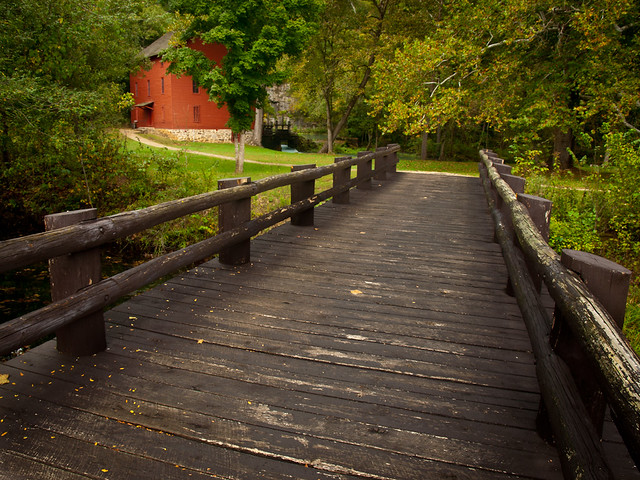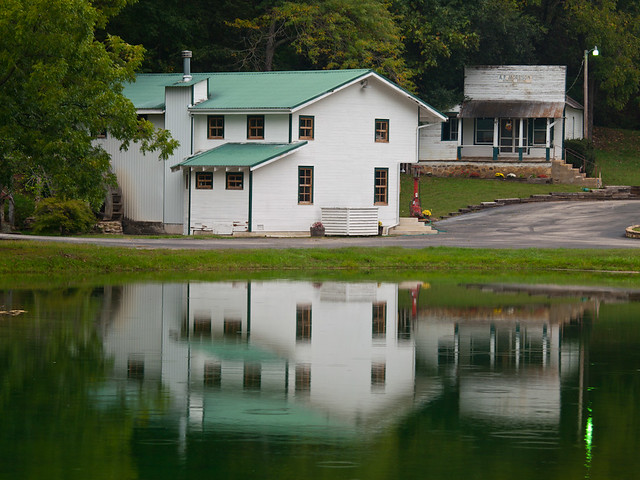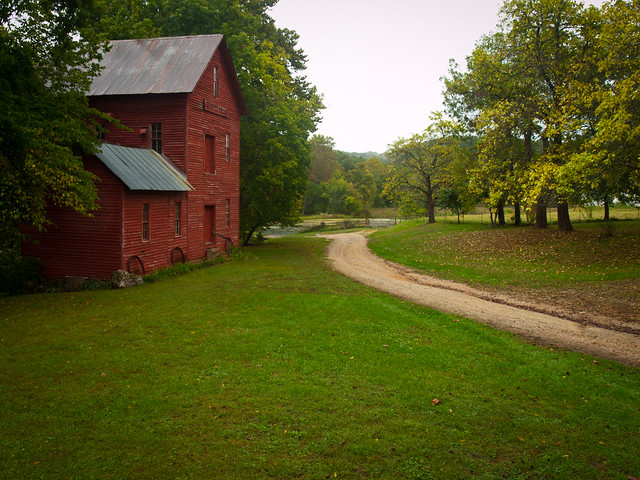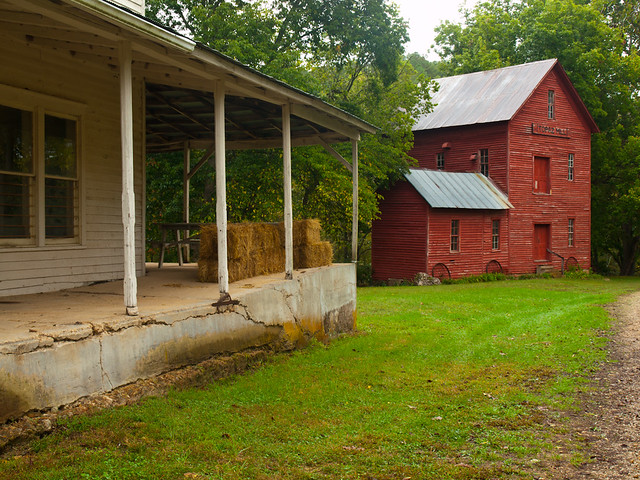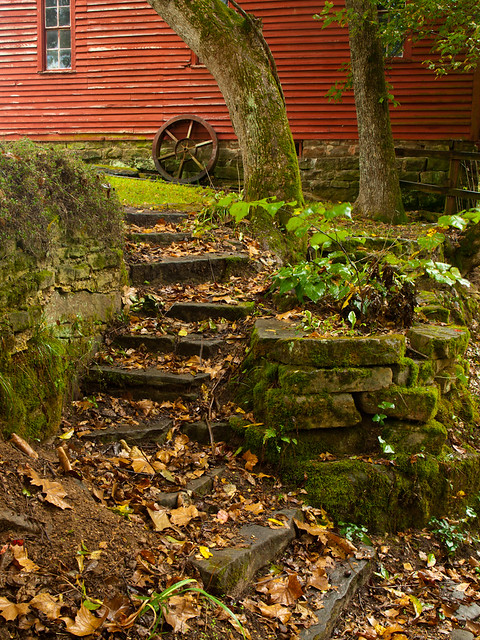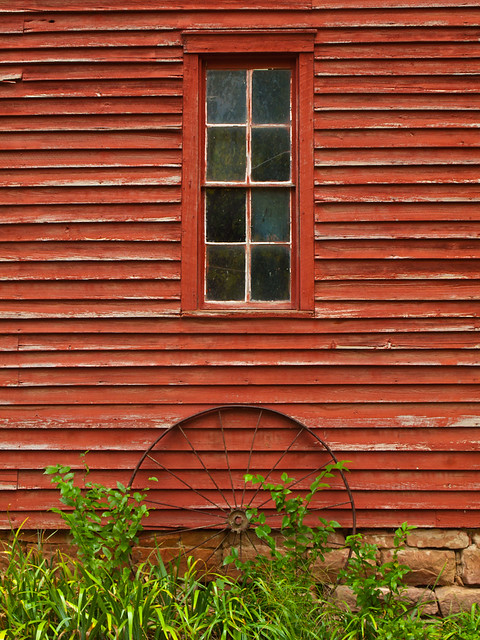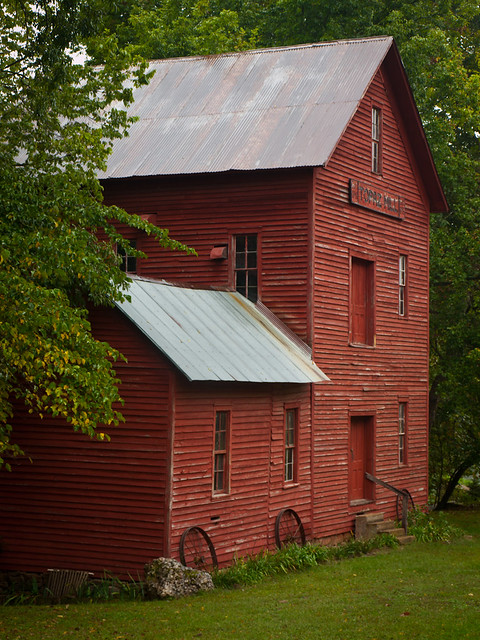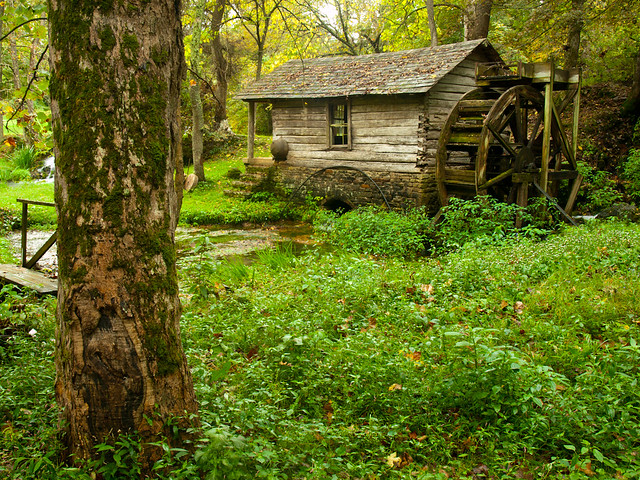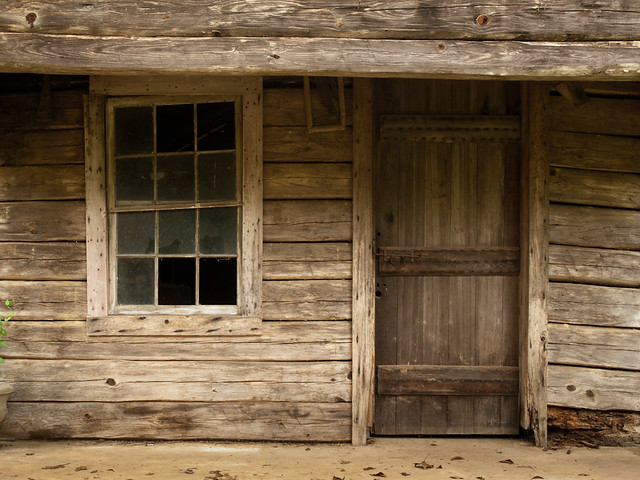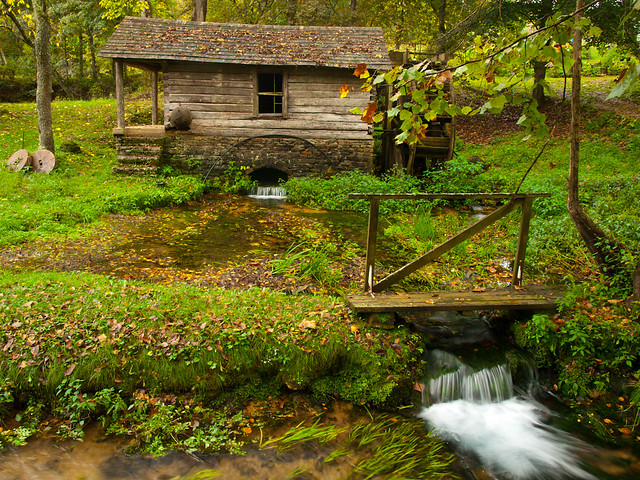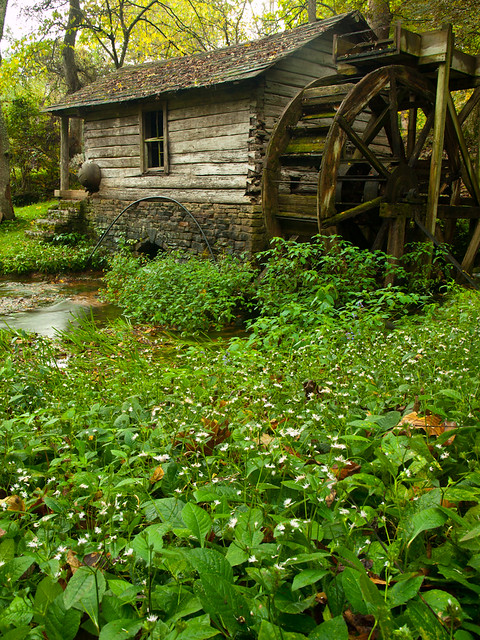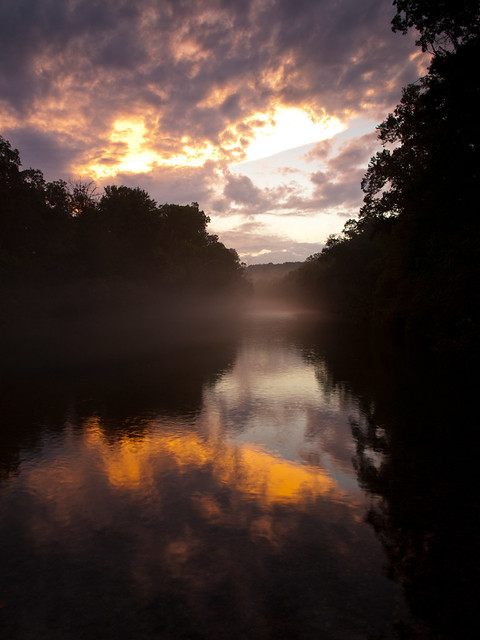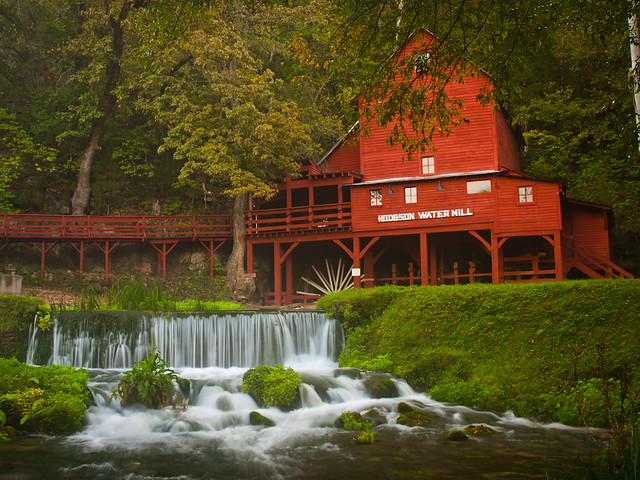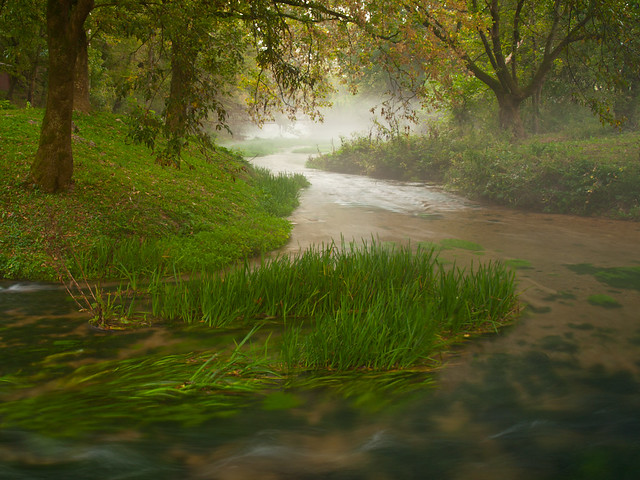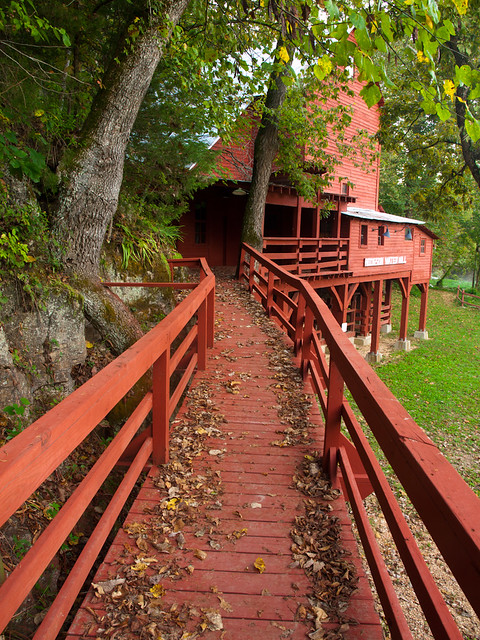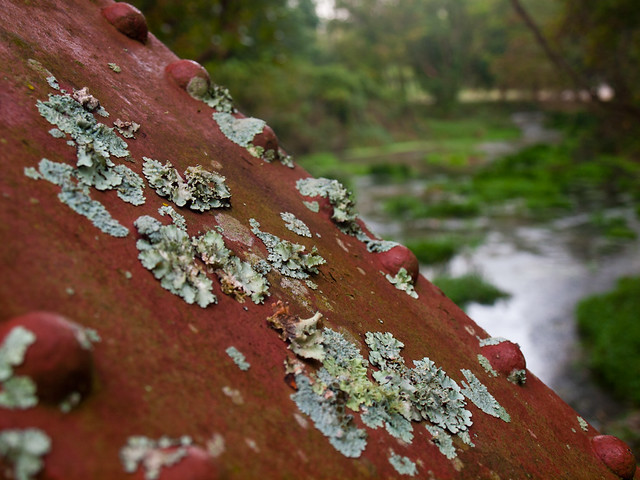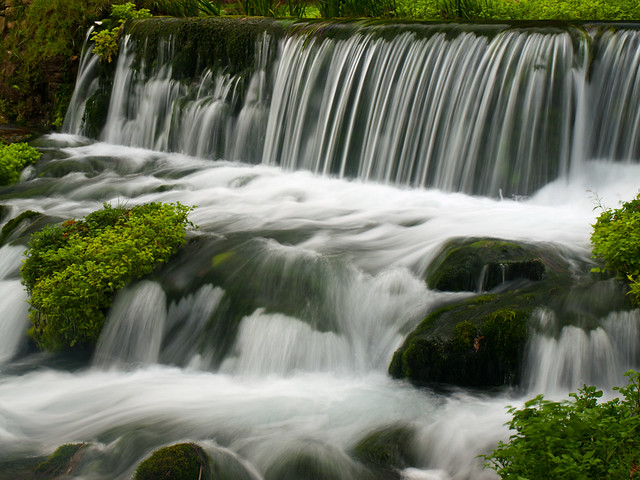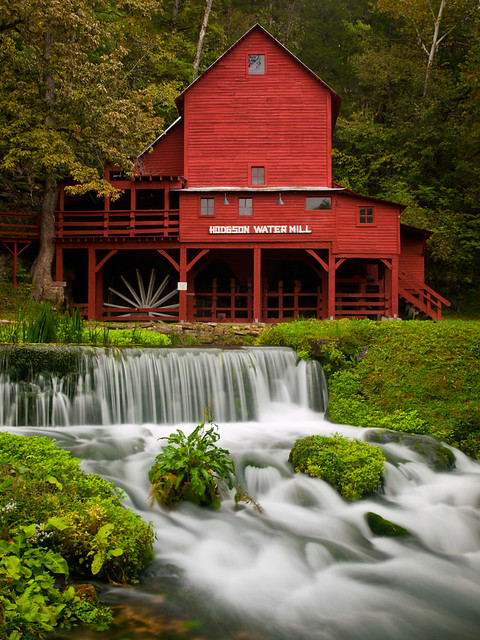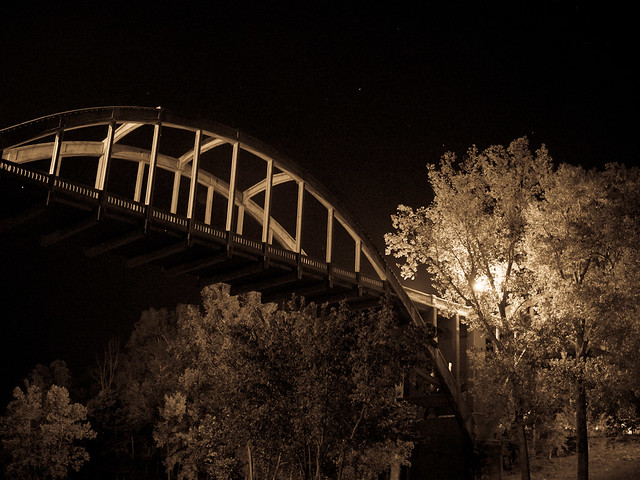But we drove on towards the park. I was a bit nervous as we passed by campgrounds and access points that were shuttered and closed. But lo and behold, the area around the mill was open! Or well, not surrounded by a phalanx of plastic barriers. We happily went to see the mill, which is well worth the drive to Missouri.
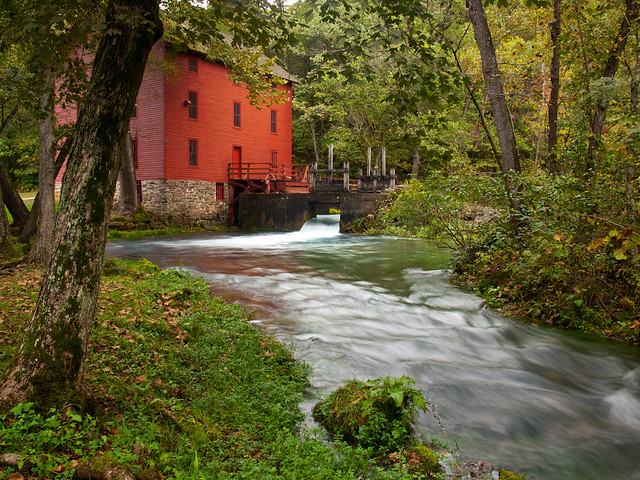
Alley Mill was built in 1894, next to a spring that expels about 81 million gallons of water a day.
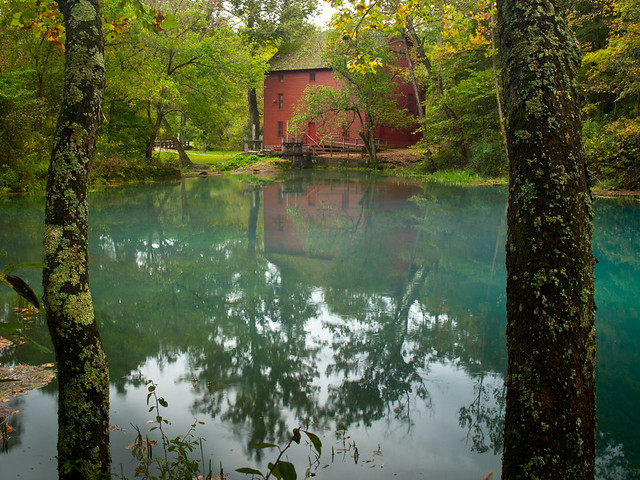
The spring (which is the 8th largest in the Ozarks) sits below a tall bluff. It was only the first weekend in October but there was already some decent fall color there.

The water from the spring has a really deep blue color, thanks to suspended particles of limestone and dolomite.

It's an amazingly beautiful area. My only complaint is that I wish it was a little bit closer to home.
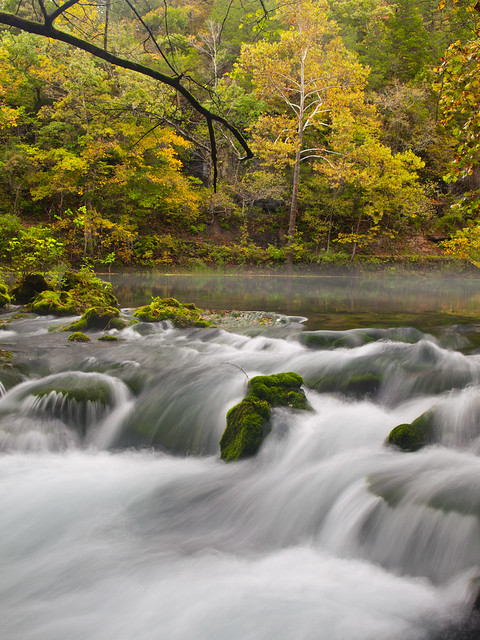
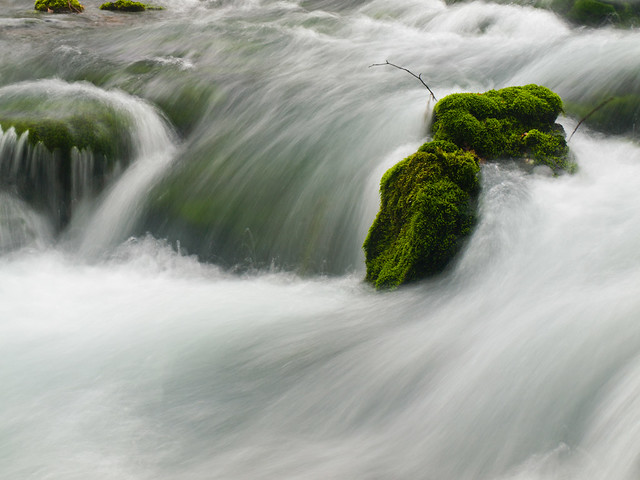
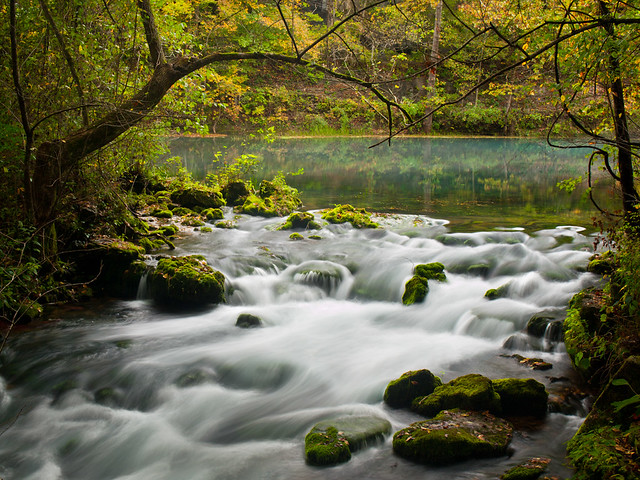
One last shot from the mill. After that we headed back home. And luckily the drive home was much better than the return trip last year (when I got a flat tire). We would have stayed in Missouri longer if the parks weren't closed. But luckily they have since re-opened, especially since the upcoming honeymoon will take me to one of the national parks that I've long dreamed about visiting...
